Teriyaki Salmon Bento is my third bento post. As always, try to pick small side dishes with different colours to make the bento look pretty and appetising.
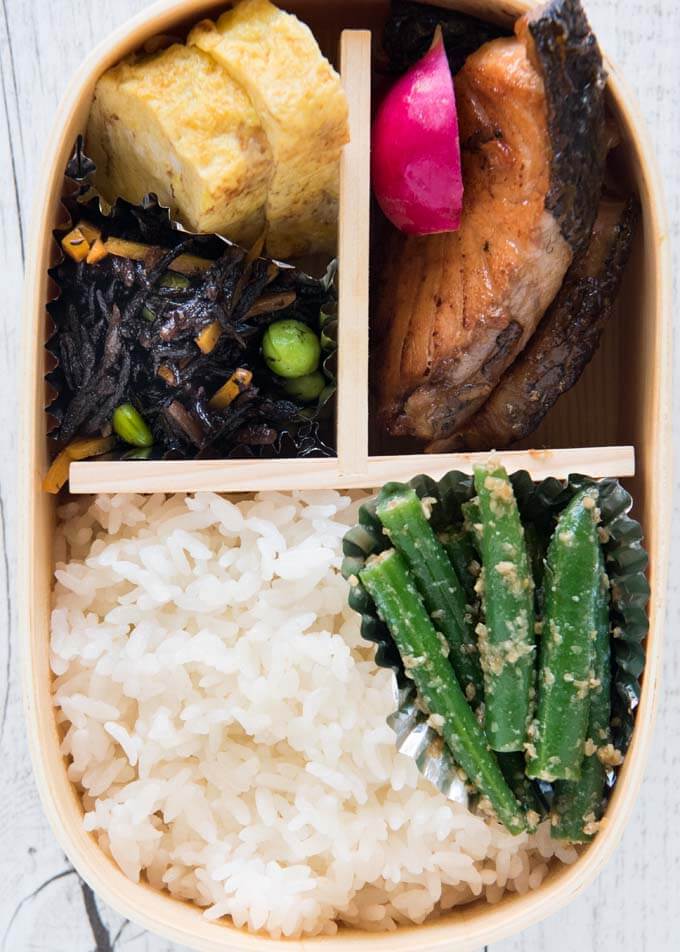
In the majority of Japanese households, bento boxes are usually filled with a main dish from the previous night and a couple of dishes that can be made several days before and kept in the fridge or frozen. So, sometimes a bento can even be packed the previous night.
Power of Make Ahead Dishes for Bento
I see bento as a complete meal in a small box. This means that I pay attention to the varieties of ingredients, texture, colour and flavour.
But this could also mean a lot of work if you try to make several different foods of a small quantity just for bento. It will also be daunting if you try to make all the dishes at once.
But if you can fill the bento with dishes that are already made ahead it is quite easy to pack, even in the morning. In the following few sections, I have listed few tips for preparing make ahead dishes for bento.
Cook extra for bento when preparing for dinner
This suits dishes that can keep only a couple of days. I often cook an extra quantity of a main dish or some side dishes at dinner time so that I can pack them in a bento box.
If a serving portion is large, I cut the ingredients into smaller sizes to fit in a bento box. In the case of Teriyaki Salmon, I made a couple of thinly sliced fillets for the Teriyaki Salmon Bento before cooking (see the photo below).
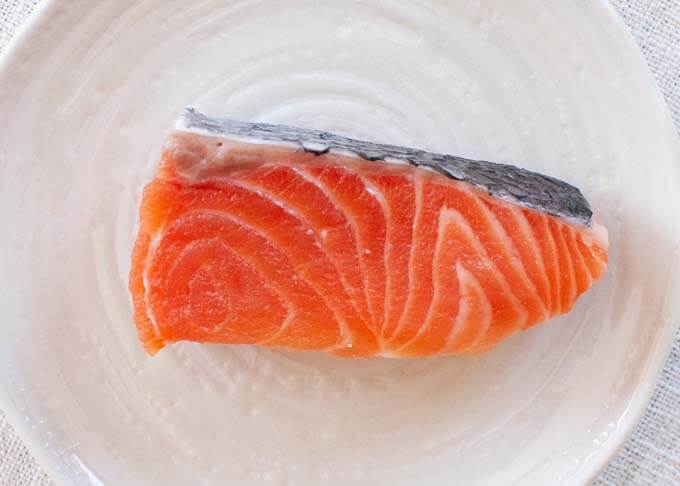
When the dish comes with sauce, like Teriyaki Salmon, you can supply the sauce in a small container and pour over the dish when eating. But you can also make the sauce slightly thicker and coat it around the fish/meat so that you needn’t carry a sauce container.
Cook a dish or two on weekend
Dishes that can keep in the fridge for 4-5 days can be cooked on the weekend. They are usually simmered side dishes like today’s bento item, Hijiki Seaweed Salad (photo below) but some mains can be in this category too.
Cook 4-6 servings for bento at once, divide into serving portions and store. Alternatively, serve at meal time in the coming week after putting aside a portion for a bento.
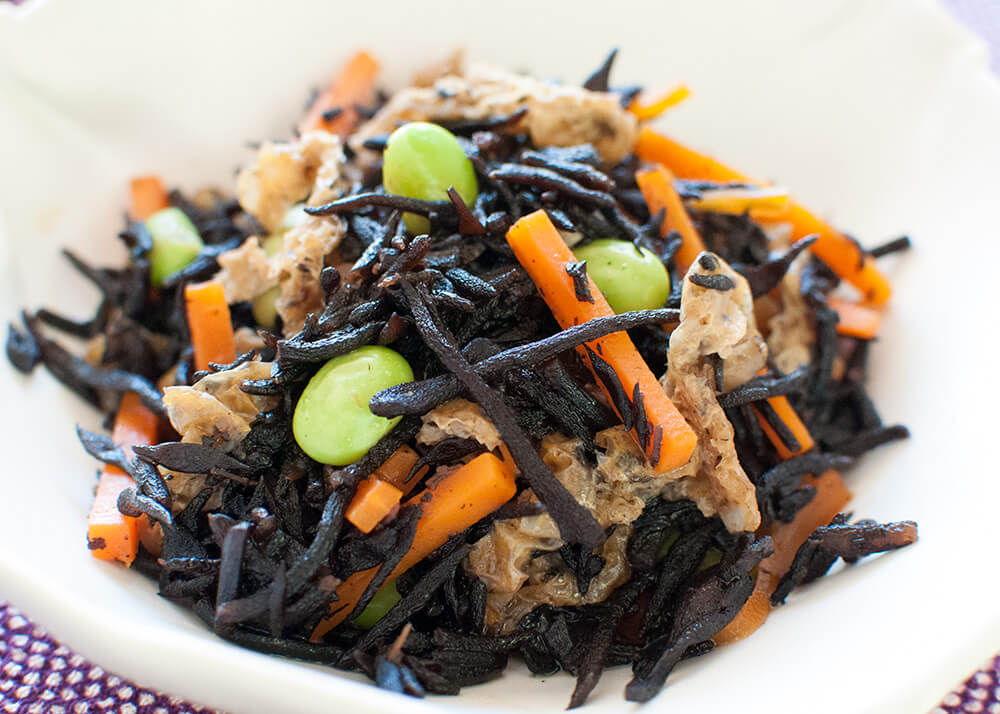
Some dishes can even be kept frozen. It is easier to freeze individual portions so that you can take one, defrost, reheat and cool it down to pack in a bento box.
You can microwave to heat up or defrost, then cook it.
Re-make from the dish/ingredients
The same ingredients can be presented in different ways by adding an extra something. Take an example of my Teriyaki Salmon recipe. I served this dish with green beans and baby tomatoes.
I blanched extra green beans as I wanted to pack them with the teriyaki salmon in the Teriyaki Salmon Bento box. But instead of just packing blanched beans, I dressed them in sesame dressing, converting it to a totally different dish.
Teriyaki Salmon Bento Ingredients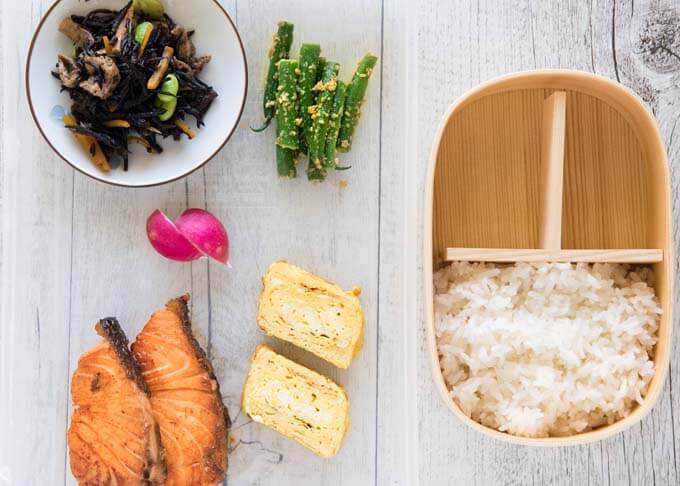
The ingredients for today’s Teriyaki Salmon Bento Box are listed below. I also added notes for the variations.
- Cooked rice – this can be made ahead. Please refer to How to Cook Rice the Japanese Way. Pack the cooked rice in a bento box while the rice is still hot or warm as it is easier to shape it, and let it cool down before adding other ingredients.
- Teriyaki Salmon– left over from dinner or make ahead. The salmon served for dinner is a fillet of about 200g/7oz which is too big to be packed in a bento box. You will only need 80-100g/2.8-3.5oz of salmon for bento. I cut the salmon into smaller portions just for bento before cooking them.
- Dashimaki Tamago (Japanese Rolled Omelette) – make ahead 1-2 days earlier. Alternatively you could have a boiled egg cut in half or scrambled eggs.
- Green Beans Goma-ae – make ahead. Please refer to Chrysanthemum Leaves Goma-ae to make goma-ae. Instead of chrysanthemum leaves I used blanched green beans that were served at dinner with the Teriyaki Salmon. You could also use spinach or snow pea leaves if you wish.
- Hijiki Seaweed Salad– make ahead. It can be kept 3-4 days in an air-tight container. It can even be frozen. Divide hijiki salad into bento-serving portions and freeze them. Defrost in a microwave and pack.
- Fresh radish pieces to add bright colour to the bento. Any other fresh veggies or even a small piece of fruit can be added here as an alternative, e.g. tomatoes or red grapes.
About Magewappa Bento Box
Today’s bento box is a wooden box called ‘Magewappa’ (曲げわっぱ), which means bent woodware. It is a traditional steam bending wood craft using Japanese cedar called ‘sugi’ (杉). It was first made by a wood cutter in Ōdate, Akita prefecture.
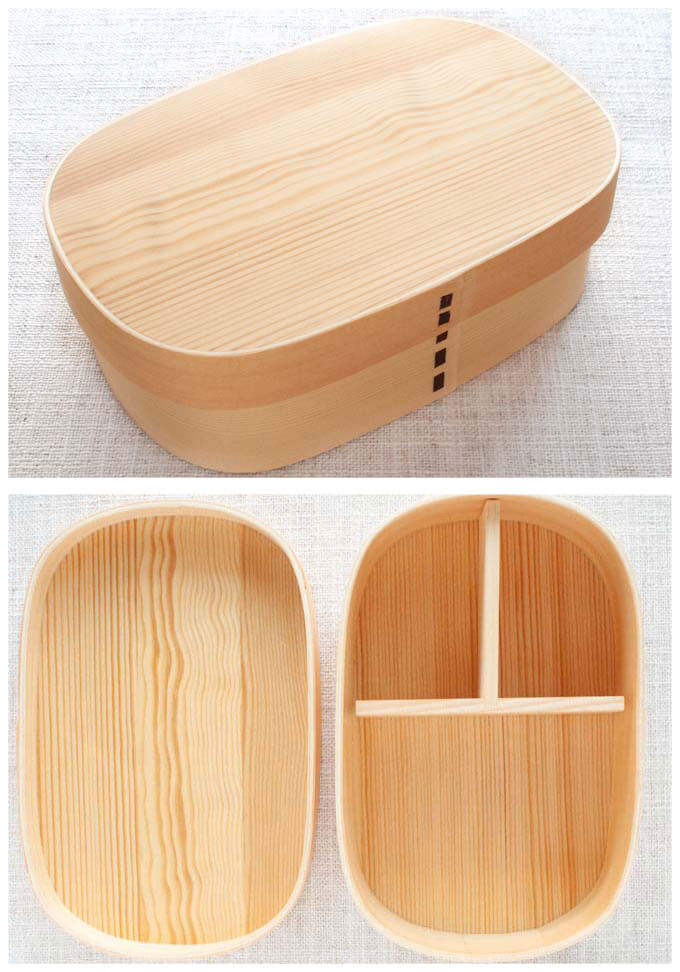
There are about three different types of Magewappa bento box. The most traditional type is made without any coating on the wood. It absorbs the moisture from the hot food and is best suited to pack cooked rice.
It is said that when you pack freshly cooked rice, it absorbs excess moisture and keeps the rice in the best condition, i.e. yummiest.
However, it requires a lot of care to maintain it without leaving stains from the food. Washing and cleaning is also difficult.
Another type of Magewappa bento box is coated in Japanese lacquerware called ‘urushi’ (漆). Compared to the box without coating, it is more durable but still requires care when cleaning it. It can also absorb moisture from food to a certain degree.
The last type, which is the easiest to handle, is coated with a thin layer of Polyurethane paint. It is durable and does not stain easily. My Magewappa bento box is this easy-to-handle type.
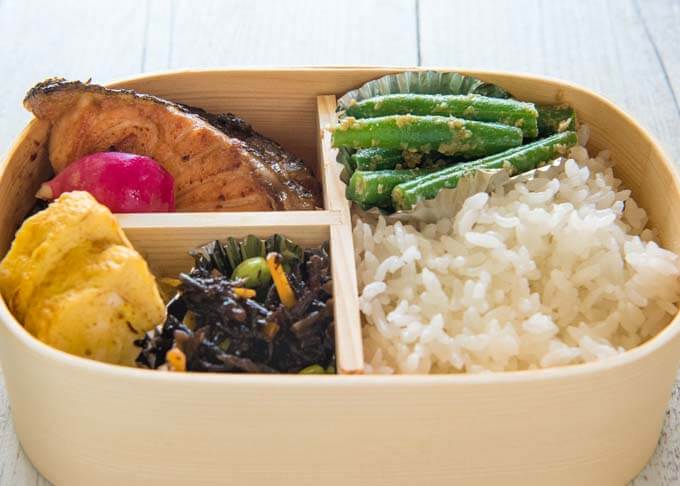
Traditionally, bento is meant to be eaten at room temperature without re-heating. It is surprising that cold salmon teriyaki is quite flavoursome and not fishy at all.
Yumiko![]()
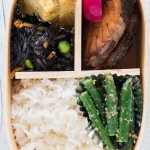
Teriyaki Salmon Bento consists of cooked rice, teriyaki salmon and a few small side dishes. Traditionally bento is meant to be eaten at room temperature without re-heating. It is surprising that cold Salmon Teriyaki is quite flavoursome without reheating. It is not fishy at all. Today’s bento box is a traditional wooden bento box called ‘Magewappa’. Please read the blog for more details.
Because bento is usually made mostly from the left-over dishes or make-ahead dishes, the time indicated in this recipe only shows the time to pack the bento box.
- 1 cup cooked rice (note 1)
- 30g/1.1oz Goma-ae with blanched green beans (note 2)
- 2 X 50g/1.8oz Teriyaki Salmon (note 3)
- 1 radish , cut in half (note 4)
- 2 slices Dashimaki Tamago (Japanese Rolled Omelette) (note 5)
- 2-3 tablespoons Hijiki Seaweed Salad
- A bento box of your choice (I used a Magewappa bento box - see post for details)
- 2 mini foil cupcake liners (note 6)
-
While the rice is still hot or warm, place it in the largest compartment of the bento box and let it cool.
-
Put green bean goma-ae in a foil cupcake liner and place in the corner of the rice compartment.
-
In one of the empty compartments, place Teriyaki Salmon pieces, then radish pieces to fill the space in the corner.
-
In the other empty compartment, place Dashimaki Tamago slices, almost vertically to allow space to place Hijiki Seaweed Salad.
-
Put Hijiki Seaweed Salad in a foil cupcake liner and place it next to the egg.
1. It is best to pack cooked rice in a bento box while hot or warm as it is easier to shape the rice into the bento box.
2. Please use the recipe Chrysanthemum Leaves Goma-ae and use blanched green beans cut to 4cm/1½” long instead of chrysanthemum leaves.
3. Instead of small pieces of thin salmon, you could cook a salmon fillet per the recipe and cut into a small portion for this bento.
4. I wanted fresh vegetables in red colour. You could use mini tomatoes as an alternative. Instead of vegetables, you could add a small piece of fruit.
5. The amount of Dashimaki Tamago is equivalent to 1 egg. Instead of Dashimaki Tamago, boiled egg or scrambled eggs can be used if you like.
6. When I have two different foods that can easily integrate if placed next each other (e.g. one item is saucy), I often put one of them in a small foil cupcake liner (goma-ae in this case).
Instead of a cupcake liner, you can also use a small sheet of aluminium foil to separate two items.
Hi!
Where do you purchase the wooden bento box?
Hi Sharon, I ordered from Rakuten Global which is equivalent to Amazon in Japan. It cost me 4,385 yen including shipping from Japan to Sydney. Here is the link. Other sites such as Bento&Co also sell them. If you Google search ‘magewappa bento box’, you might find a shop in your country.
FYI, mine is not a hand-made high quality box as the expensive one could cost $120-$150. I think the price varies depending on the quality of the Japanese cedar and the craftsmanship.
Yuuum! Mum, this looks so good! Feel like driving over and bringing me a bento box? 😇
That’s a big ask… I might do that if I am in a very good mood.
Thank you so much for this bento post. I do hope you will do more of these in the future. It would even be very helpful if you slipped a reminder into a post to cook a little extra or put a little extra aside for a bento lunch.
Anna
Hi Anna, I am planning to post more bento posts, in deed.